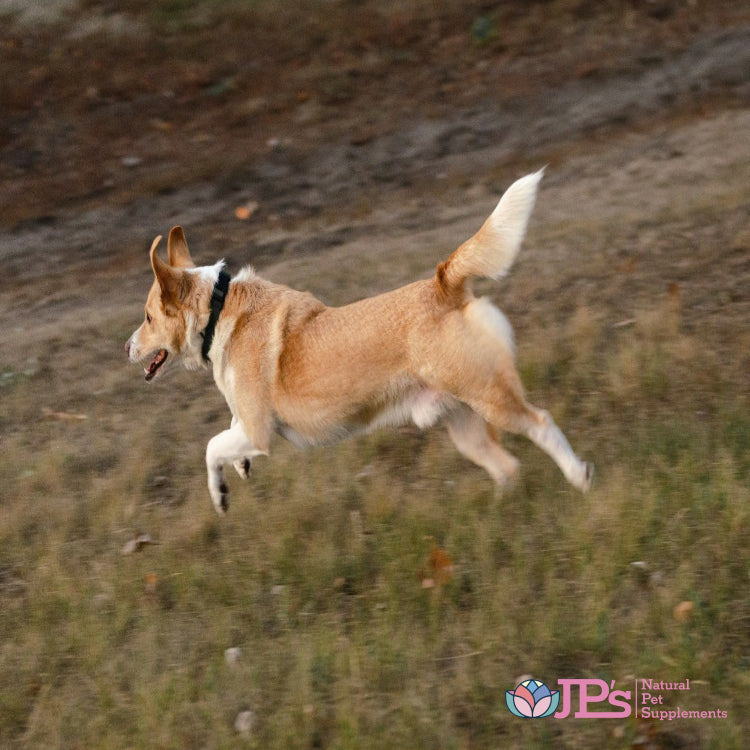Dogs are very playful, and it’s not uncommon for them to occasionally chase their tails. However, this can become a problem when it becomes repetitive, excessive, causes injury or interferes with your dog's daily functioning.
Why Does a dog chase their tail?
In a few situations, tail chasing does not necessarily indicate an issue. For example, a puppy may become aware of its tail and begin checking it out with its mouth. Their spinning is a short-lived effort to get some information about their tail. A dog can sometimes chase its tail when it’s feeling excited or playful. Dogs that have been kept in kennels/ crates constantly for too long without any stimulation or dogs that are bored can lead to spinning and chasing their tail.
Reinforced the Behaviour
Some owners find this funny and can encourage the behaviour by laughing or even showing the dog their tail to prompt it.
Some owners can use laser lights to give their dog exercise or think it’s a fun game for their dog; this can cause Laser light syndrome, and OCD-rooted behaviour can emerge from prolonged exposure. Laser light syndrome is an OCD disorder characterised by obsessively chasing reflections, lights, and shadows. This behaviour leads to the dog feeling frustrated, anxious, and confused by the red dot. The laser activates your dog's prey drive, making it difficult for your dog to remove themselves from that mental state. This can lead to heightened anxiety; the inability to catch the red dot light may elevate anxiety levels, which leads to restlessness or destructive behaviour. Compulsive action: some dogs may develop compulsive behaviours, such as tail chasing or excessive grooming, due to prolonged exposure to laser pointer games.
Breed and age
Some dogs have a known genetic predisposition to compulsive behaviours like tail chasing. For example, flank sucking is common in Dobermans. The age of your dog might also be a factor; sudden onset of tail chasing is common in older dogs and often signals a psychological or medical condition.
Medical causes
Some neurological conditions can cause a dog to chase its tail. Whilst rare, severe tail chasing has been attributed to epilepsy and is sometimes described as a seizure-related symptom.
Other cases.
Anal sacculitis (Anal glands)
An irritated rectum
Parasites
Flea or tick infestation
Pain
Cancer
Seizure disorder
Injuries
If your dog receives a tail injury, such as from a slammed door, it will often try to ease the discomfort by chasing the tail.
Diagnosis
Veterinary intervention may be required to diagnose and treat the underlying conditions properly. If the behaviour is becoming more frequent or persists for more than a week, see your vet. Your vet should run diagnostic tests to rule out any underlying medical causes, including neurological disorders, injury, and allergies. If the cause is psychological, more comprehensive treatment may be required.
Drug Therapy
Lowered serotonin and increased dopamine levels may be associated with compulsive disorders such as tail chasing. If it isn’t possible to bring your dog’s behaviour under control by changing your dog’s environment, then it may be necessary to try drug therapy anti-anxiety medications. While it can take several weeks for medications to be effective, it can be a great step to bring compulsive behaviour under control alongside training protocols and management in place.
Is Your Dog Bored?
All dogs need adequate amounts of activity and training to meet their physical and emotional needs; if they are not met, dogs become bored and behave in ways that attempt to help boredom; tail chasing is one example.
To combat boredom
Exercise your dog in a relaxing environment.
Arrange play dates with dogs you know.
Breed fulfilment, for example, spaniels like searching and sniffing, engaging their nose.
Provide access to doggy activities, enrichment, playing games, problem-solving activities, food puzzles, and positive reinforcement.
Train your dog the place/settle exercise so they can learn to chill and have an off switch.
Replace the behaviour
Try redirecting your dog to another focus. For example, train your dog to retrieve a toy, do scent work sniffing, or try something your dog enjoys doing.
Tips
Don’t give the behaviour any attention, positive or negative. Ignoring is best. So don’t shout at your dog; this will increase the behaviour.
Increase your dog’s activity levels and training.
Ensure your dog’s needs are met. Breed fulfilment, so research what your dog was bred for.
Ensure your dog has brain enrichment interactive toys such as food-stuffed kongs.
Engagement training exercises with you, playing games with you, and having a good relationship with your dog are important.
Seek veterinary advice to detect health problems before getting help from a dog behaviourist.
Justine Shone



















Leave a comment (all fields required)